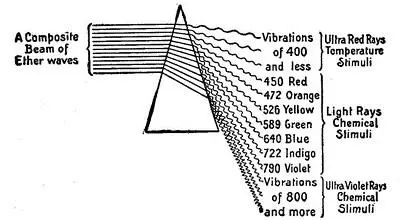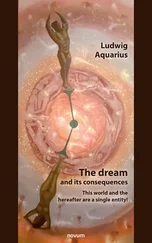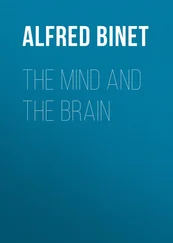George Herbert Betts - The Mind and Its Education
Здесь есть возможность читать онлайн «George Herbert Betts - The Mind and Its Education» — ознакомительный отрывок электронной книги совершенно бесплатно, а после прочтения отрывка купить полную версию. В некоторых случаях можно слушать аудио, скачать через торрент в формате fb2 и присутствует краткое содержание. Жанр: foreign_edu, pedagogy_book, foreign_psychology, на английском языке. Описание произведения, (предисловие) а так же отзывы посетителей доступны на портале библиотеки ЛибКат.
- Название:The Mind and Its Education
- Автор:
- Жанр:
- Год:неизвестен
- ISBN:нет данных
- Рейтинг книги:3 / 5. Голосов: 1
-
Избранное:Добавить в избранное
- Отзывы:
-
Ваша оценка:
- 60
- 1
- 2
- 3
- 4
- 5
The Mind and Its Education: краткое содержание, описание и аннотация
Предлагаем к чтению аннотацию, описание, краткое содержание или предисловие (зависит от того, что написал сам автор книги «The Mind and Its Education»). Если вы не нашли необходимую информацию о книге — напишите в комментариях, мы постараемся отыскать её.
The Mind and Its Education — читать онлайн ознакомительный отрывок
Ниже представлен текст книги, разбитый по страницам. Система сохранения места последней прочитанной страницы, позволяет с удобством читать онлайн бесплатно книгу «The Mind and Its Education», без необходимости каждый раз заново искать на чём Вы остановились. Поставьте закладку, и сможете в любой момент перейти на страницу, на которой закончили чтение.
Интервал:
Закладка:
In the case of the higher thought activities, it is not probable that one section of the frontal lobes of the cortex is set apart for thinking, one for feeling, and one for willing, etc., but rather that the whole frontal part of the cortex is concerned in each. In the motor and sensory areas, however, the case is different; for here a still further division of labor occurs. For example, in the motor region one small area seems connected with movements of the head, one with the arm, one with the leg, one with the face, and another with the organs of speech; likewise in the sensory region, one area is devoted to vision, one to hearing, one to taste and smell, and one to touch, etc. We must bear in mind, however, that these regions are not mapped out as accurately as are the boundaries of our states—that no part of the brain is restricted wholly to either sensory or motor nerves, and that no part works by itself independently of the rest of the brain. We name a tract from the predominance of nerves which end there, or from the chief functions which the area performs. The motor localization seems to be the most perfect. Indeed, experimentation on the brains of monkeys has been successful in mapping out motor areas so accurately that such small centers as those connected with the bending of one particular leg or the flexing of a thumb have been located. Yet each area of the cortex is so connected with every other area by the millions of association fibers that the whole brain is capable of working together as a unit, thus unifying and harmonizing our thoughts, emotions, and acts.
6. FORMS OF SENSORY STIMULI
Let us next inquire how this mechanism of the nervous system is acted upon in such a way as to give us sensations. In order to understand this, we must first know that all forms of matter are composed of minute atoms which are in constant motion, and by imparting this motion to the air or the ether which surrounds them, are constantly radiating energy in the form of minute waves throughout space. These waves, or radiations, are incredibly rapid in some instances and rather slow in others. In sending out its energy in the form of these waves, the physical world is doing its part to permit us to form its acquaintance. The end-organs of the sensory nerves must meet this advance half-way, and be so constructed as to be affected by the different forms of energy which are constantly beating upon them.

Fig. 14.—The prism's analysis of a bundle of light rays. On the right are shown the relation of vibration rates to temperature stimuli, to light and to chemical stimuli. The rates are given in billions per second.—After Witmer.
The End-organs and Their Response to Stimuli.—Thus the radiations of ether from the sun, our chief source of light, are so rapid that billions of them enter the eye in a second of time, and the retina is of such a nature that its nerve cells are thrown into activity by these waves; the impulse is carried over the optic nerve to the occipital lobe of the cortex, and the sensation of sight is the result. The different colors also, from the red of the spectrum to the violet, are the result of different vibration rates in the waves of ether which strike the retina; and in order to perceive color, the retina must be able to respond to the particular vibration rate which represents each color. Likewise in the sense of touch the end-organs are fitted to respond to very rapid vibrations, and it is possible that the different qualities of touch are produced by different vibration rates in the atoms of the object we are touching. When we reach the ear, we have the organ which responds to the lowest vibration rate of all, for we can detect a sound made by an object which is vibrating from twenty to thirty times a second. The highest vibration rate which will affect the ear is some forty thousand per second.
Thus it is seen that there are great gaps in the different rates to which our senses are fitted to respond—a sudden drop from billions in the case of the eye to millions in touch, and to thousands or even tens in hearing. This makes one wonder whether there are not many things in nature which man has never discovered simply because he has not the sense mechanism enabling him to become conscious of their existence. There are undoubtedly "more things in heaven and earth than are dreamt of in our philosophy."
Dependence of the Mind on the Senses.—Only as the senses bring in the material, has the mind anything with which to build. Thus have the senses to act as messengers between the great outside world and the brain; to be the servants who shall stand at the doorways of the body—the eyes, the ears, the finger tips—each ready to receive its particular kind of impulse from nature and send it along the right path to the part of the cortex where it belongs, so that the mind can say, "A sight," "A sound," or "A touch." Thus does the mind come to know the universe of the senses. Thus does it get the material out of which memory, imagination, and thought begin. Thus and only thus does the mind secure the crude material from which the finished superstructure is finally built.
CHAPTER IV
Education was long looked upon as affecting the mind only; the body was either left out of account or neglected. Later science has shown, however, that the mind cannot be trained except as the nervous system is trained and developed . For not sensation and the simpler mental processes alone, but memory, imagination, judgment, reasoning and every other act of the mind are dependent on the nervous system finally for their efficiency. The little child gets its first mental experiences in connection with certain movements or acts set up reflexly by the pre-organized nervous system. From this time on movement and idea are so inextricably bound together that they cannot be separated. The mind and the brain are so vitally related that it is impossible to educate one without performing a like office for the other; and it is likewise impossible to neglect the one without causing the other to suffer in its development.
1. FACTORS DETERMINING THE EFFICIENCY OF THE NERVOUS SYSTEM
Development and Nutrition.—Ignoring the native differences in nervous systems through the influence of heredity, the efficiency of a nervous system is largely dependent on two factors: (1) The development of the cells and fibers of which it is composed, and (2) its general tone of health and vigor. The actual number of cells in the nervous system increases but little if at all after birth. Indeed, it is doubtful whether Edison's brain and nervous system has a greater number of cells in it than yours or mine. The difference between the brain of a genius and that of an ordinary man is not in the number of cells which it contains, but rather in the development of the cells and fibers which are present, potentially, at least, in every nervous system. The histologist tells us that in the nervous system of every child there are tens of thousands of cells which are so immature and undeveloped that they are useless; indeed, this is the case to some degree in every adult person's nervous system as well. Thus each individual has inherent in his nervous system potentialities of which he has never taken advantage, the utilizing of which may make him a genius and the neglecting of which will certainly leave him on the plane of mediocrity. The first problem in education, then, is to take the unripe and inefficient nervous system and so develop it in connection with the growing mind that the possibilities which nature has stored in it shall become actualities.
Читать дальшеИнтервал:
Закладка:
Похожие книги на «The Mind and Its Education»
Представляем Вашему вниманию похожие книги на «The Mind and Its Education» списком для выбора. Мы отобрали схожую по названию и смыслу литературу в надежде предоставить читателям больше вариантов отыскать новые, интересные, ещё непрочитанные произведения.
Обсуждение, отзывы о книге «The Mind and Its Education» и просто собственные мнения читателей. Оставьте ваши комментарии, напишите, что Вы думаете о произведении, его смысле или главных героях. Укажите что конкретно понравилось, а что нет, и почему Вы так считаете.












![Edward Ellis - Adrift on the Pacific - A Boys [sic] Story of the Sea and its Perils](/books/753342/edward-ellis-adrift-on-the-pacific-a-boys-sic-s-thumb.webp)